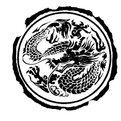Click the blue text above to follow for regular updates!
The fourteen damp-heat syndromes, at the onset, present with chest tightness, confusion, and loud cries of pain, indicating damp-heat obstructing the middle and upper jiao. It is advisable to use Cao Guo (Grass Fruit), Bing Lang (Betel Nut), Xian Chang Pu (Fresh Acorus), Yuan Su (Coriander), and Liuyi San (Six-One Powder), each in substantial amounts. Alternatively, one may add Zao Jiao (Soap Pod) and decoct with Di Jiang Shui (Earth Juice Water). Note: This entry pertains to the condition of excessive damp-heat, where diuretic herbs are used more frequently than heat-clearing herbs, as the pathogenic factor is at the initial stage and obstructive, necessitating the urgent use of pungent herbs to open the obstruction, avoiding the use of cold and cooling herbs that may stagnate the qi mechanism. Additionally, it is noted that Yuan Su (Coriander) is not as effective as Xie Bai (Garlic Chives), which may be paired with Gua Lou (Trichosanthes), Zhi (Gardenia), or Chi (Fermented Soybeans). The Qing Long (Green Dragon) summary: In this syndrome, damp-heat is excessive, and the herbs used such as Cao Guo (Grass Fruit), Bing Lang (Betel Nut), Xian Chang Pu (Fresh Acorus), and Yuan Su (Coriander) seem to be inconsistent with the condition. The note emphasizes that due to the initial closure, pungent herbs are necessarily used. Liuyi San (Six-One Powder) clears heat and promotes urination. Additionally, references to Wang’s annotations may also be consulted. Furthermore, ready-made medicines such as Ren Dan (Human Pill) and Huo Xiang Zheng Qi Shui (Agastache Correct Qi Water) can be considered. After the obstruction is resolved, treatment should follow the principles of damp-heat. Wu Ju Tong’s Wen Bing Tiao Bian (Differentiation of Warm Diseases) discusses damp-heat affecting the middle jiao, stating that damp-heat enters through the mouth and nose, leading to a lack of appetite and unresponsiveness of the orifices, with San Xiang Tang (Three Fragrance Decoction) as the main treatment. This aligns with the current entry and can be referenced. Wu Ju Tong notes that this pathogen originates from the upper jiao, thus requiring treatment to address the upper jiao. The formula for San Xiang Tang (Three Fragrance Decoction) (slightly bitter, slightly pungent, slightly cold, and aromatic) includes Gua Lou Pi (Trichosanthes Peel) (9g), Jie Geng (Platycodon) (9g), Hei Shan Zhi (Black Gardenia) (6g), Zhi Ke (Bitter Orange) (6g), Yu Jin (Curcuma) (6g), Xiang Chi (Aromatic Fermented Soybeans) (6g), and Jiang Xiang (Sandalwood Powder) (9g), boiled in five cups of water to yield two cups, divided into two doses for warm consumption. Discussion of the formula: This syndrome originates from the upper jiao, and since the mechanism is still shallow, Gua Lou Pi (Trichosanthes Peel), Jie Geng (Platycodon), and Zhi Ke (Bitter Orange) are used for their slightly bitter and slightly pungent properties to open the upper jiao, while Hei Shan Zhi (Black Gardenia) is light and slightly bitter to clear heat, and Xiang Chi (Aromatic Fermented Soybeans), Yu Jin (Curcuma), and Jiang Xiang (Sandalwood Powder) transform the turbid and open the obstruction in the middle and upper jiao.

